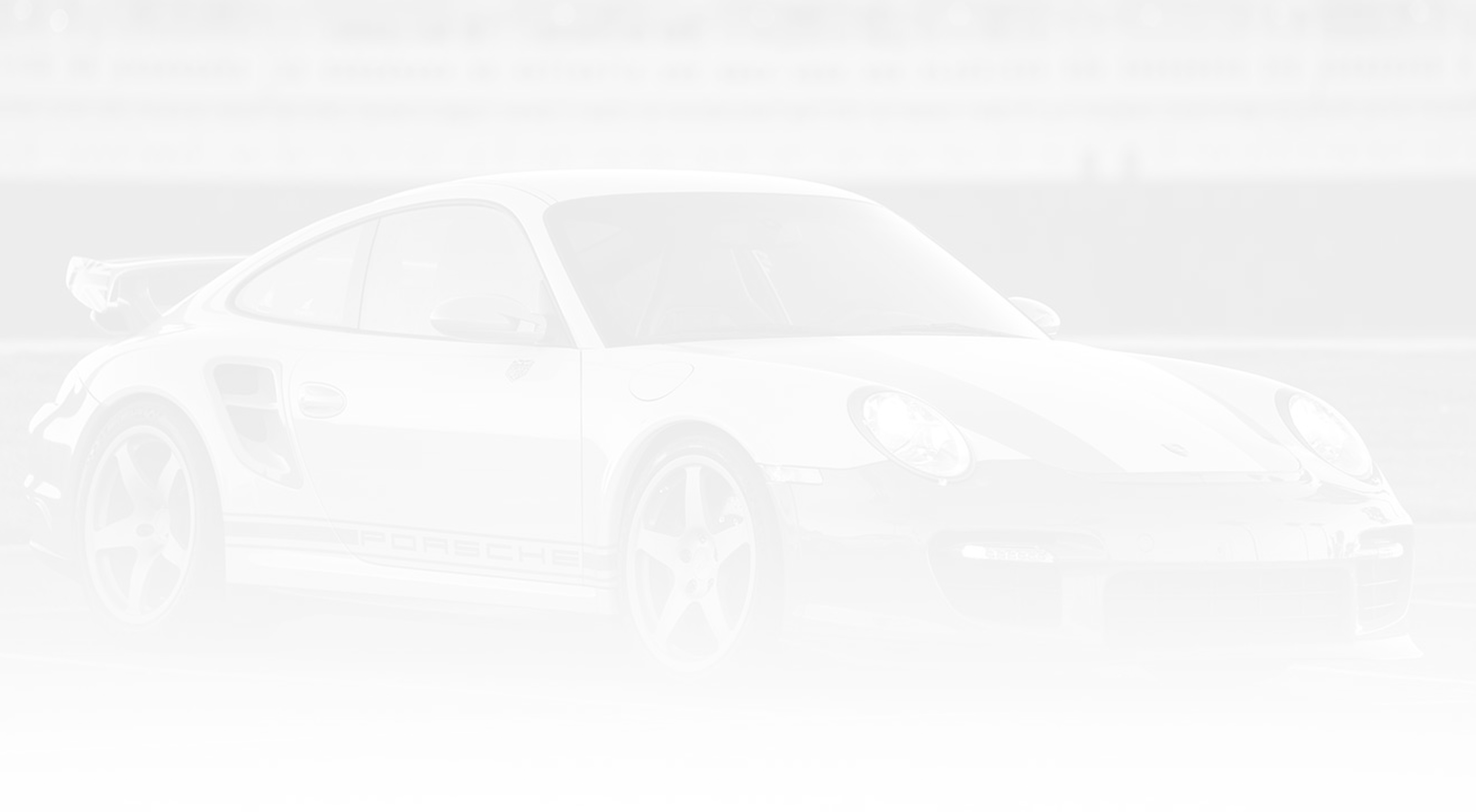SharkWerks 997 GT3RS Modification and Tuning Guide
So you've settled on what is perhaps our favorite platform: the Porsche 997.1 GT3 / GT3 RS. At SharkWerks we've owned every GT3 variant/model to date but there's something magical about the 997.1's lighter-weight 3.6 pistons/internals and the way it revs versus the 3.8L Mk2 GT3. In 2007 Shark Werks took delivery of its wide-body viper green GT3RS and for over four years and 25,000 miles we lived a very charmed RS-life. When she wasn't daily driven hard on the street, through rain, snow, 120 degree desert heat, dyno or track she was performing R&D duty for Shark Werks products. She was piloted by professional drivers Tanner Foust, Cort Wagner and made several TV appearances running amok to 200mph and beating up on Ferrari F430's. She was reviewed, driven and adored by many journalists and magazines over the years and was even used to help land U-2 Spy planes (no really!) for the day. She went through hell and high-water and never skipped a beat and although she was perfect from new, our 4.5 year adventure allowed us some room for enhancement, improvement and even more fun than had she remained completely stock.
So while the MK1 RS starts with a highly tuned sport suspension, brake and chassis set up from the factory, the most exciting flat-6 Porsche engine to date (plenty of power/acceleration), and with some terrific aero fine-tuned at the 'ring we have modified our own project ZKermit and many other RS' to give them an even sharper edge. Feel free to keep the car as-is or take the red pill like we did and continue below...
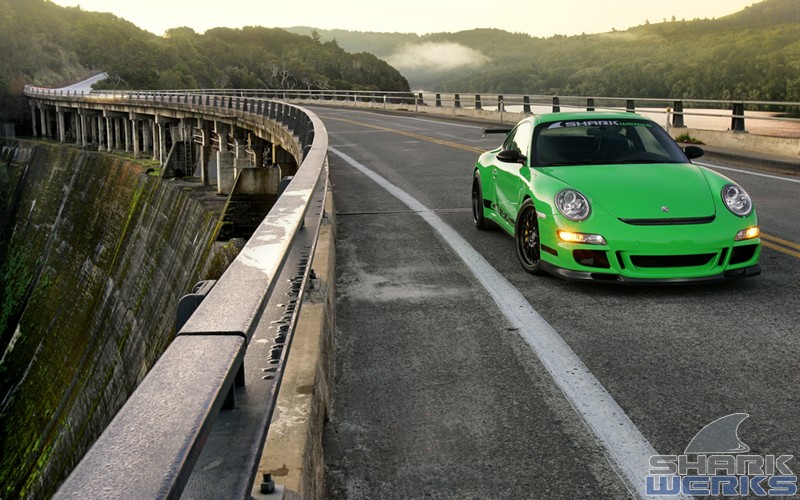
Seriously, what more does it need? What more could one want? Truthfully, there's nothing this car "needs" and it's as track-ready as a modern day car could be from the factory. But as most owners past, present (and likely future!) will tell you, there are a few good tweaks, pokes, and improvements that can sharpen this already-sharp tool even more. For starters, what went wrong with the US editions? No bucket seats, no roll bar... basically no fun!
We are often asked "What would you do if this was your car?" While there isn't really a correct answer for every person and situation, and this isn't meant to be an "Official FAQ", it is our guide to playing/experimenting with your GT3RS based upon our experiences having owned, driven and worked with these cars over the years. We refer to the 2010 and newer 3.8L powered GT3RS cars as "Mk2" or "997.2" in this article. The "Mk1" refers to this generation 2007-2008 GT3RS models.
Factory Porsche OEM Upgrades
Porsche actually got a little skimpy on the GT3RS for the US. We didn't get those Carrera GT carbon fiber seats, nor did we get a plastic rear window and roll bar. We had the bog-standard heavy sport (if you could call them that) seats. For the RoW (rest of the world) consider yourselves lucky and skip ahead if you like. Otherwise feel free to laugh at the state of the US-market...
On early 2007 models Porsche actually sent chassis over with the receivers/bolts to a-fix the factory roll bar. You can simply pull back the carpet and try to locate the recievers. If not you can have your local shop weld in some plates/recievers as we did:

The cost of the Carrera CGT seats was and still is sky-high. For those of you skinny enough to fit in them (healthy eaters no doubt) importing/buying the seats ends up being expensive and in the early days they came in about 30 pieces. Just like a jigsaw you have to build the seat. Once you do though it fits in perfectly as expected. You will have to use a Porsche diagnostics tool in order to disable the thorax airbag. There are other choices both of which we also used in Kermit, the first is the factory Euro 996GT3 bucket seat and the second is the 997.2 GT3RS seat available in 2010+ cars. The later includes a thorax airbag although if you're taller you may find headroom/helmet access an issue. We would recommend one of those two options vs the CGT seat both for function and price.
Here's ZKermit shown with the 2004-2005 996 European GT3 seats:
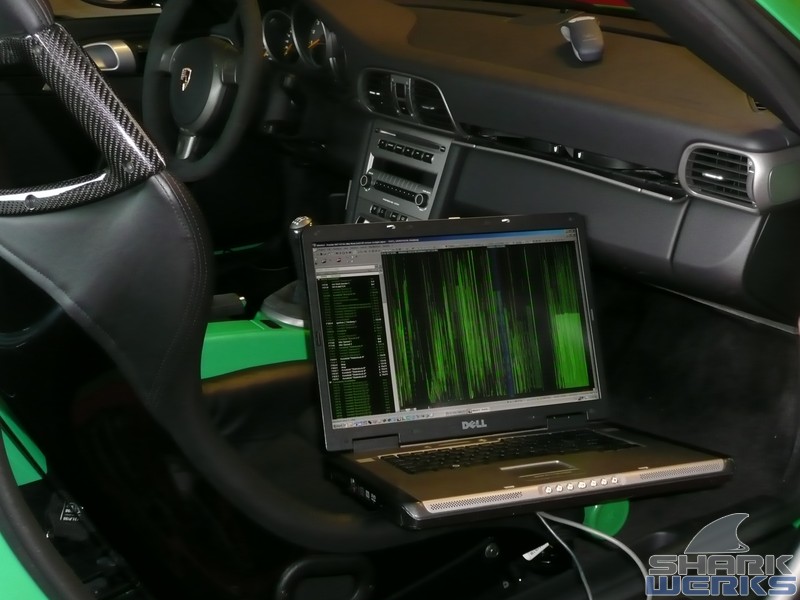
Once you've set up a factory style bucket seat and RS roll bar you're ready for Schroth Harnesses and can feel more like the RoW owner's...
Exhaust
There is no better sounding factory 911 in stock form period. This isn't your vacuum-cleaner-like 911 Turbo sound here. The GT3 sports three mufflers and even then squeezes out some truly epic sounds. European sound restrictions and laws tend to be stricter than anywhere else in the world so with a little effort you can pump up the volume. The only down-side is that the three-piece system weighs in at hefty 78 pounds.
For Free
You can simply unplug your flapper valve connector from the controller (your sport button inside controls this function to a degree) or plug the vacuum lines and enjoy a louder version of what the factory intended. It's free, easy-to-do and rather cheerful at that.
The Factory has Titanium!?
Indeed they do use titanium on the Mk2 GT3RS center muffler, but it's very much a non-starter for any Mk1. The single-wall thick Ti center section is actually prone to failure on the 3.8RS and doesn't really change the sound all that much either. It's lighter by about 15 pounds but your wallet will be a lot lighter than that - to the sum of $3000.
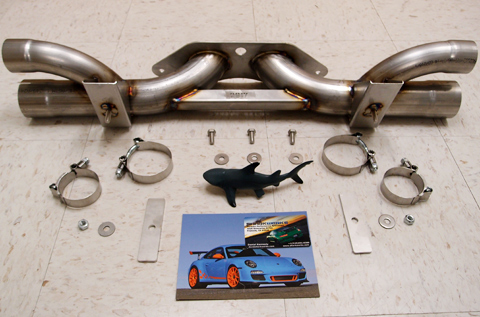
Upgrade Options
There are many exhaust products on the market and at SharkWerks we offer a couple of solutions ranging from rather wild to absolutely obnoxious. Our Shark Werks center bypass replacement is what we found most daily driven, street and/or track cars use. You save about 15 pounds off the back-end with our replacement and get what we feel is a pretty nifty sound. It's louder on the outside but there's no drone/resonance on the inside so it's perfect for a long trip across the country (yes we really did do that) or for a date into town. Because you retain the side mufflers your sport button activation still works so you can simply turn it off and be as close to stock as possible.
See the difference here:
For the track-heavy users we also offer a complete replacement Track Exhaust which saves about 55 pounds from the tail (a good thing indeed) but it can be heard for miles and miles:
It's best served with a helmet, the sort you'd need to wear at a race track with no sound restrictions. On the plus side when you're not ringing people's ears you do remove a bunch of cooped up heat away from those fat rear tires when removing the side exhausts. We have found that such a drastic change in back pressure robs the car of a small amount of torque down in the low-rpms (below 3.5k). This usually isn't important for the RPM ranges that track cars and spirited drivers use and some of that power can be recovered (along with the throttle response and additional top-end power) with our software tuning.
Although the factory exhaust tips are fine and dandy some of you folks like them larger and so we offer these 88mm ceramic coated ones for that vice:
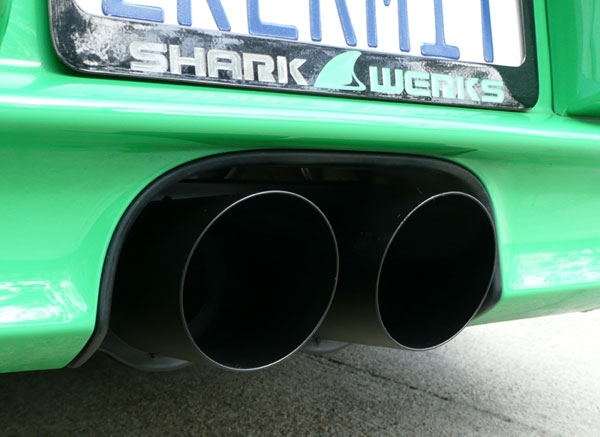
Headers & Catalytic Converters
Many of the factory cup cars sport almost identical header designs as what's found on the stock car so you're starting with something pretty spot on. Could it be better/improved? Certainly but at what cost and drawbacks? You'll be changing heat ranges the ECU reads, not to mention back pressure. All of these have an impact on what ignition maps your ECU calls for which can negatively affect power and drivability. Freer flowing headers sound good on paper but we usually see a low-end torque loss and in some cases a loss of power. Back pressure drops on a naturally aspirated engine do not produce the same level of gains/advantages as on a turbo engine. Since the headers and cats are a single piece on these cars, the oxygen sensors that provide the ECU with data can't just be moved around or ignored, either. They're vital to how the car will actually run and although you can make more power with less dense catalysts (200 cell versus 400 cell for example), we have seen many aftermarket cats break-down, come apart and fail. A check engine light is to be expected (even without visible failures) and something one should be prepared to face with this direction. The overall volume of sound will also increase.
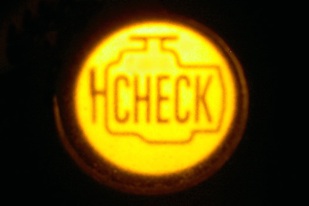
We are still experimenting with freer-flowing cat/header designs on our Mk2 RS, but for the Mk1 cars and with our 500 HP 3.9L engine we are still using the stock factory header/cat system and have not found it stopping us yet! They do not cause a check engine light and to our knowledge do not have a high failure rate even when tracked extensively.
One interesting factory-made alternative is the 4.0 header/cat system. The headers themselves are identical however the catalyst element is reduced from 400 cell to 300 cell. It should be much more reliable than most aftermarket brands, but it's pricey...
If you plan to change the headers/cats on your car, you should consult local and federal emissions regulations, as tampering with this equipment is not legal for street use in most regions.
Intake
The 997.1 GT3/RS intake box is actually the same as found on the old 2004 996 GT3 and is derived from the 2001 Turbo. It's not perfect but it seals very well which is so important. We have seen, tried, tested and even R&D' our own variations of intakes with cone filters et all both in single and dual-format but we were never able to produce real gains. We tried using different designs during our 3.9L engine program development and even at that level we did not find the factory airbox to be restrictive or particularly lacking. Most of what we have seen on the market tends to cause more turbulence but also sucks in hot-air and raise the intake temps. The ECU feeds off of sensor data from the intake and increasing the temperatures leads to timing being pulled and less power. There was very little audible change either. If you're looking for more power the intake isn't where you're going to find it.
The factory does offer a solution in the form of the slightly improved 3.8 Mk2 GT3 RS intake with a second inlet and dual feed through the decklid. An even more expensive option is the factory 4.0 airbox which sports two sealed conical filters in an extremely beautiful carbon box which is north of $6000. That alone won't suffice because you will also then need to modify your existing factory decklid to feed/funnel air to the second inlet in the box. Not exactly easy to do nor kind to the existing decklid (especially if it's the more expensive RS).
If you must tinker with your airbox we use the upgraded BMC filter.. We can't say you'll see/feel any difference but at least it does breathe better than a paper factory filter.
If you plan to change the intake air box on your car, you should consult local and federal emissions regulations, as tampering with this equipment is not legal for street use in most regions.
Software
It's never easy to eke out more power from any high-strung GT3 engine but for The EVOMSit ECU tuning a tremendous amount of time was spent fine tuning the software with 91 and 93 octane fuels. It's not just peak power but the drivability is also improved and much time was dedicated to the E-gas (electronic throttle pedal) settings which have been optimized in both sport and non sport modes. The improved throttle response in both modes provides a snappier throttle response as well as smoothing out some of the small dips. A solid 15+hp & 14tq is attainable. One can also customize some of the settings including adding in the ability to left-foot brake. The throttle body will no longer closed when touching the gas and brake simultaneously.
The OEM ECU features what we call IST (Intelligent Switching Technology) that allows for automatic switching of ignition timing maps based upon input received from other engine sensors. The EVOMSit ECU tuning utilizes the multiple OEM ignition tables in progressive stages, which can optimize safe performance based upon outside conditions and different octane fuels. The ECU automatically switches to the best-suited ignition map creating an automatic “race mode” if race fuel is utilized. We often get asked if is worth running better gas. The answer is always absolutely! The ECU even in stock form can take advantage of it.
Not only are the power gains and overall performance impressive but we were able to improve the power while utilizing 91 octane fuel. Additionally, we have calibrations for larger displacement 3.8L engines as well as full race programs, all of which utilize our IST (Integrated Switching Technology) and SP (Sport Pedal) functions. More info and dyno charts are available here. The upload is done via the TuneIT OBDII module via the diagnostic port so there is no ECU removal required.
If you plan to modify the software on your car, you should consult local and federal emissions regulations, as tampering with this equipment is not legal for street use in most regions. Please read this page for more information.
3.9 Engine Upgrade
Beyond the small bump in power you can find with the upgrades mentioned here, the only method we have found to really gain significant power beyond the factory's ultra tuned engine is to rebuild it with larger and more aggressive components. For this we have developed and tested a big-bore, 3.9L engine upgrade. The upgrade consists of higher compression, lighter-weight pistons, more aggressive camshafts, a higher engine rev-limiter and various tuning techniques to push the power level to 500 bhp. This is a major overhaul and requires the car or engine to be sent to our facility in California for the operation. More details on this upgrade are available here (or watch the video below):
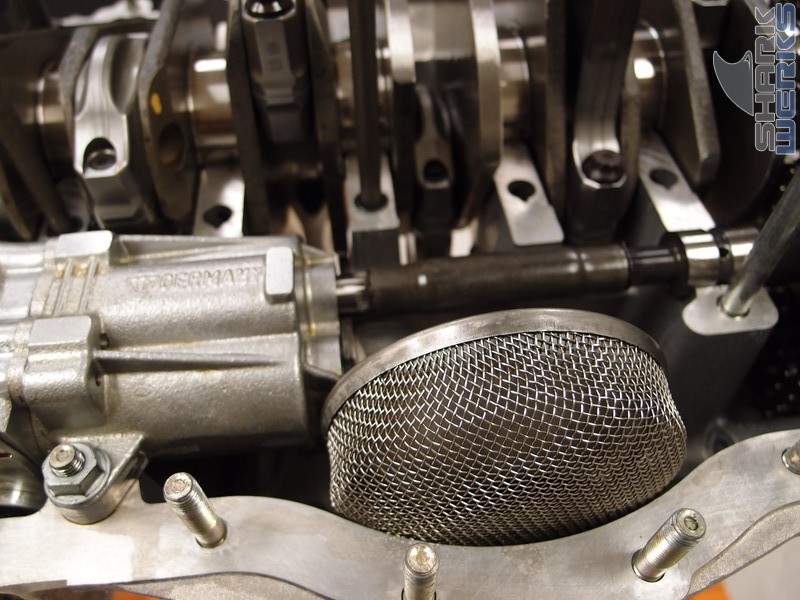
Having built many of these engines over the years we have found the state of the internals to be worn to varying degrees. Engines tracked heavily with only 15,000 miles can be even more worn than daily driven cars with 50,000 miles. If you're needing a refresh or looking into re-building you can address several areas of the top-end including replacing the lifters as well as the usual gaskets/hardware. We also check all valves and valve guides for wear. In particular we have seen some heads show excessive wear which can be strengthened with improved/motorsport valve guides. Valves are relatively cheap to check and replace versus having a catastrophic failure.
For engines over 20,000 miles (or extensive track life) we usually suggest looking into refreshing the bottom-end components, and at the very least check and balance the crankshaft and replace the connecting rod bolts and bearings. This obviously adds to the cost.
With the engine out, this would be a good time to address the the coolant pipe issue, check the clutch and flywheel, and/or upgrade your LSD. As of 2017 we also opened the books on performing our SharkWerks 4.1L engine conversion for the 997.1 generation of GT3s. You can visit the project gallery for some examples of those as wel.
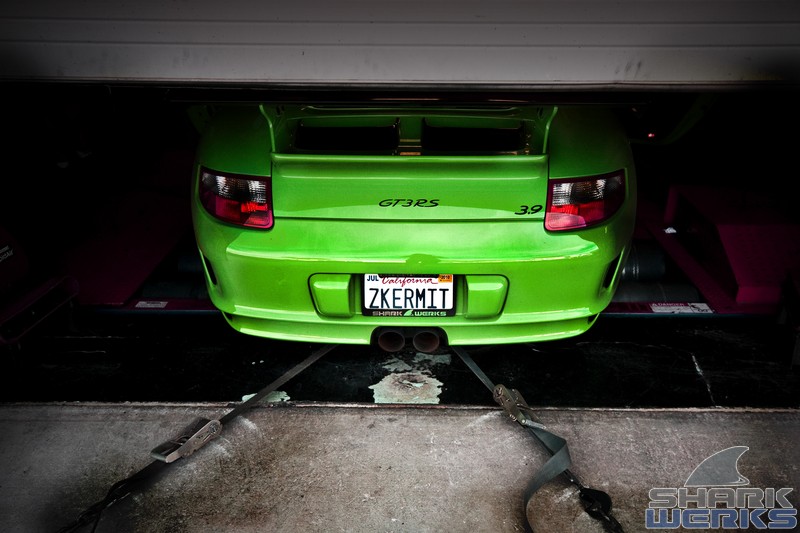
If you plan to modify the engine in your car, you should consult local and federal emissions regulations, as tampering with this equipment is not legal for street use in most regions. Please read this page for more information.
Wheels
The Mk1 GT3 and RS wheels are actually quite pleasing aesthetically and the design seems carried over from the 996 GT3. You can leave them well-alone and stock although by today's standards they are certainly a bit on the heavy side. There are lighter-weight forged wheel options (even Magnesium if you must) out there that we have bought and tested at the track that have held up over the years. We prefer to stick with our two long-standing partners (over 7.5 years) HRE and Champion Motorsport. Pick your flavor and go. From HRE we'd recommend either the single piece Monoblok series or the motorsport-derived Competition series. Our own 3.9L Kermit ran on 19 inch C-21s and Champion RS 171s at a later date. The later should _not_ be powdercoated as the manufacturer has concerns about metal fatigue/degradation. Current go-to choices seem to be the lightweight Forgeline GA1-R's , HRE P305M or HRE P101
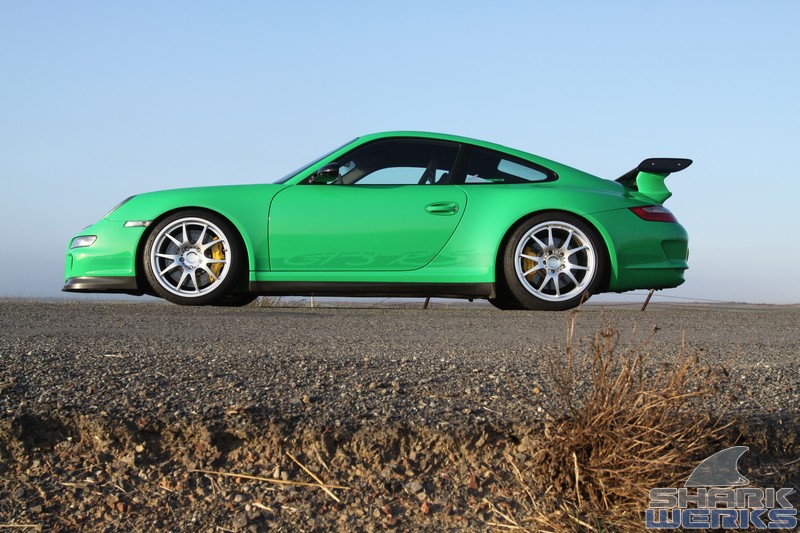
2007 997 GT3RS Shown with Champion RS171 Wheels in silver finish
You may notice that your stock GT3RS also has 5mm spacers. Somebody in the wheel department must have gotten a 5mm calculation wrong although there's no harm in running them but when building a custom wheel we tend to change the offsets to a more aggressive fitment negating the need for wheel spacers. To help make it easier / safer / faster to change wheels we like to use the High Strength Manganese Boron Steel RSS Wheel Stud kit to replace the lug nuts. A longer 90mm kit is also available.
The more track-minded you are, the more likely you will end up with a second set of wheels. One set for the track and one for the street. For those of us that drive the cars daily and/or in the rain, one set could be outfitted with a non R-compound tire such as the Michelin Pilot Super Sport. It tends to last longer as the tread-wear rating is considerably friendlier.
Want to go faster still and have an even better choice for race rubber? Then go with an 18-inch set up. Something like the HRE R40 race wheel which even fits over the PCCB caliper. It's both light and strong at 17-20 pounds and is currently used in real-world racing, rallying etc... The 18-inch wheel gives new options for tire choices.
Just say no to 20s. Get that idea out of your head. It won't look good. It won't ride well. The geometry and suspension was never set up for that sizing and we never put wheels larger than 19-inch diameter on the GT3.
Brakes
Got steel brakes? Brilliant. Got PCCB's? Also bully for you (albeit with a slight twist). Trying to improve upon the factory system is like trying to take a top tier MMA fighter aside and saying, "I really like what you got and I need you to go more than 5 rounds". It's not something that's really necessary, nor is it easy to do. The factory brakes are world-class, make no bones about it. If you've come from any other Porsche wait till you put your foot into these -- especially PCCB's.
For a pure street car the PCCB's should be left alone. It's just not something one really needs to tamper with unless you're using the car extensively at the track. For steel brakes, you can certainly try running more aggressive pads but be prepared to change rotors (and induce even more noise) more frequently. When it does come time to change rotors a firm favorite is the two piece GiroDisc rotors which are not only a few pounds lighter but have better cooling properties thanks to their slotted design and an aluminum hat which you re-use.
Over the years we've only seen a few GT3s, (each in the 50-60k mile range and driven hard with a 3.9 to boot) that have seen the calipers start to fail. In those rare cases we've switched to the Brembo GT system with great results. The 380mm front and rear kit can be set up with either drilled or slotted rotors. The rotors and calipers are lighter than the factory steel brakes and rotors.
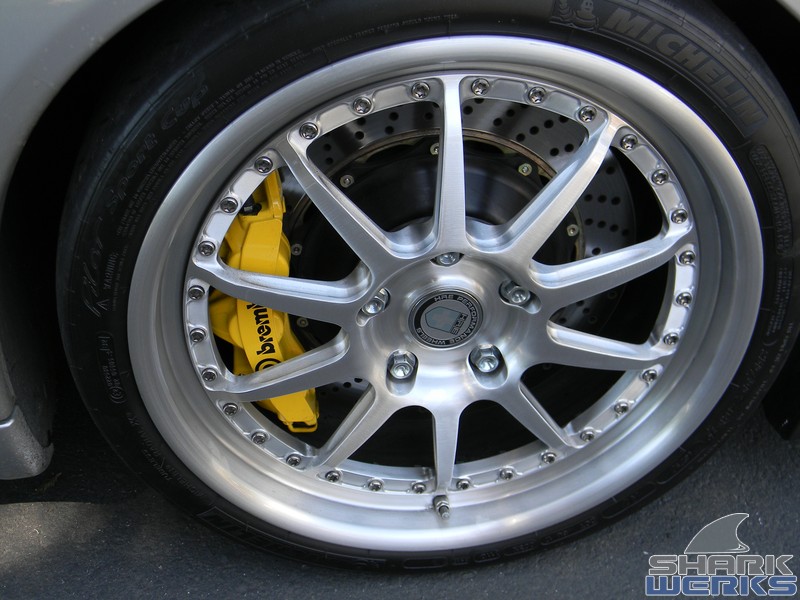
Tracking with PCCB's
It's generally not a great idea to use the PCCB's if you plan to track more than a few times a year or at medium/higher skill level. The rotors will simply not last long enough to be economically viable. Sadly that $8800 option is usually replaced with a $5000 two-piece steel rotor set up that we provide our track customers from Brembo. Their Type III rotor kit allows you to re-use those same yellow calipers in the front and rear but with 72-vein rotors (double that of standard) and intricate slots they've managed to survive well into a season even on higher HP turbocharged GT2 cars... let alone GT3s. A superb option/alternative and the only draw back is the use of a narrow annulus brake pad in the front. Because you're no longer afraid of destroying your PCCB rotors you can opt for more aggressive brake pad combinations and replace just the outer rotors (retaining the aluminum hats) when needed for a much cheaper price than ceramic. In the field, this set up has been used for One Lap of America on GT3RS', Club Racing with 3.9s and general Driver's Education events with great success. Your hand brake still works, unlike some other brake kits. The cheaper alternative is the 380mm Girodisc which we also offer. In more recent times a more durable and cost-effective alternative Carbon Ceramic Rotor solution has become available from Surface Transforms , which can bolt on with the factory calipers. For more on those head over to our product page. If your factory PCCB's are tired / worn and need to be replaced these would be a good option.
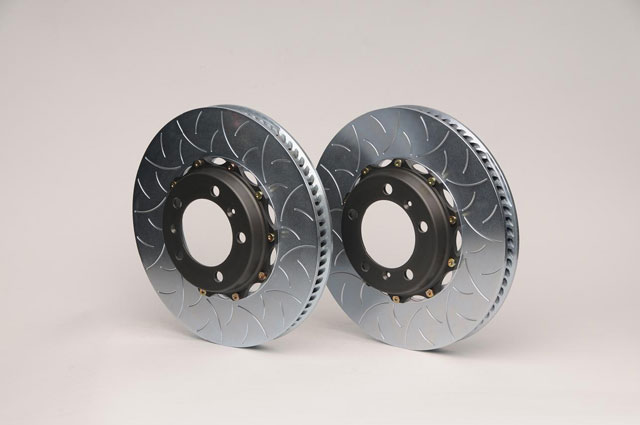
One factory designed option that many GT3 owners like to go with is the updated brake cooling ducts from the MK2 2010+ GT3's in the rear. They can be modified to fit just like this:
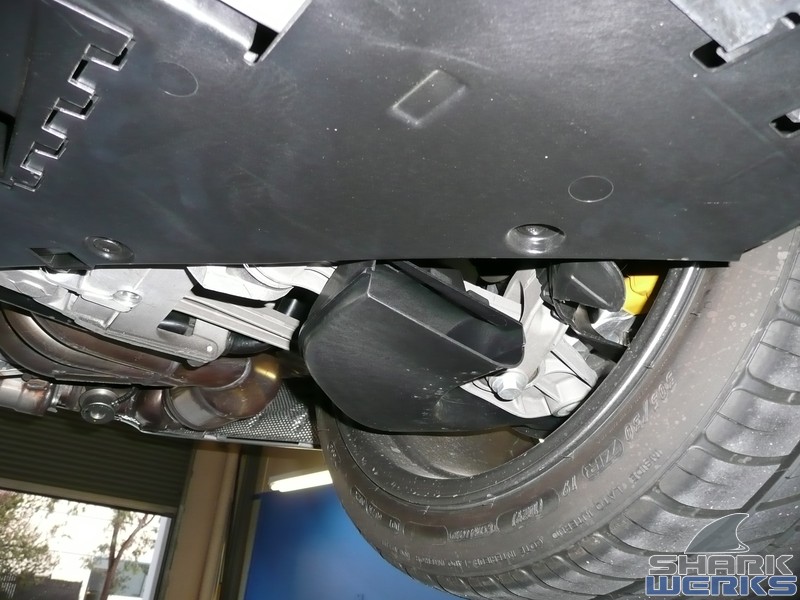
We like to Mov it - Aftermarket Ceramic Replacement
A few West Coast GT3'ers have swapped out their factory PCCB's for a ceramic alternative from Mov' it. At $25,000 they might seem expensive but factor in replacement factory rotors vs. only having to buy these once (they are guaranteed to last the life of the car), and if carbon ceramic rotors are how you want to track then these are proven to last much longer than the factory option. Other than cost they are slightly larger, a tiny bit heavier and oh yes expensive. One other question we often get is, "My car came with steel brakes but I really want to upgrade them to the PCCBs". That can actually be done although at an insanely expensive price (the parts alone are known to be in excess of 35K). There is however a very intelligent and more cost-effective solution (at half the price of the factory set up) available from Surface Transforms, that allows you to re-use your factory steel caliper set up but add their larger Carbon Ceramic design (with a more modern / durable design than the originals) for considerably less. The kit we use comes with calipers and all that you need to do the conversion. And yes if you're wondering along with the weight savings you will also have the added benefit of no more brake dust to clean off of those wheels (hey admit it... it can be annoying!).
In terms of improvements start with better cooling- brake ducts from the Gen2's are often used in the rear, for example.
Suspension
The stock suspension on the GT3RS is considered to be the best OEM 911 suspension available, and therefore it's ready to drive on a track or enjoy on the street with no changes. Do at least check on the alignment since it tends to be delivered from the factory somewhat erratically/inconsistently set up. Ours was way out of spec. If you want to go with a fairly aggressive set up off the bat you can use what Porsche has termed their "track setting" in the back of your manual. It's a good starting point.
Coilover Suspension - Springs and Shocks
The OEM suspension on a GT3RS has a coilover system, meaning the car has adjustable ride height and an excellent sport shock from the factory. The shock has the "PASM" feature (Porsche Active Suspension Management), activated by using the shock button in front of the shifter. This button enables a stiffer dampening/rebound setting on the shock (via On/Off settings) which makes the handling firmer for flat roads. It will make rough roads appear bouncier, something that Porsche addressed on the Mk2 GT3 by making the car softer (hence faster at rough tracks including the Nürburgring in Germany).
The stock coilover suspension, designed by Bilstein, is completely sufficient for most street drivers and track use, rarely being a concern for even very fast drivers who do not adjust their suspension meticulously for the fastest lap times. Although we generally recommend leaving this stock coilover system in place, as it's far easier to make the car worse than it is to make it better we have played, tested and lived with indeed better alternatives. First generation GT3/GT3RS' and their PASM have often been critiqued by both the press and owners for being too harsh and reactionary over variable terrain. Indeed for canyon carving with uneven surfaces the the suspension can overly-react in terms of rebound (especially) and compression with undesirable results such as constantly having to correct/counter steer with compliancy suffering.
With excessive driving on rough terrain or track use, the stock shocks will eventually wear out, either by the shock body's shaft bending or the shocks simply wearing out. The best options when this happens, we've found, are to replace the OEM system with another set of OEM components or indeed to dispense with PASM altogether and go straight for the Motorsport Designed Bilstein ClupSport double adjustable coil over system. With narrow-band ranges for compression and rebound and acute adjustability for both compression and rebound we have found that by fine tuning we are able to get much-improved compliance, consistency and along with a more confident ride even on our own former Generation 2 PASM car. Proof that analogue can be better than digital after all. We really feel this ClubSport system is a game changer for 1st generation 2007-08 PASM owners that feel like they get "beat-up" and have inconsistent results when driving over variable terrain. A similar alternative kit that we have intruduced is the Ohlins TTX-PRO which allows for the same level of adjustment if the PASM is going to go.
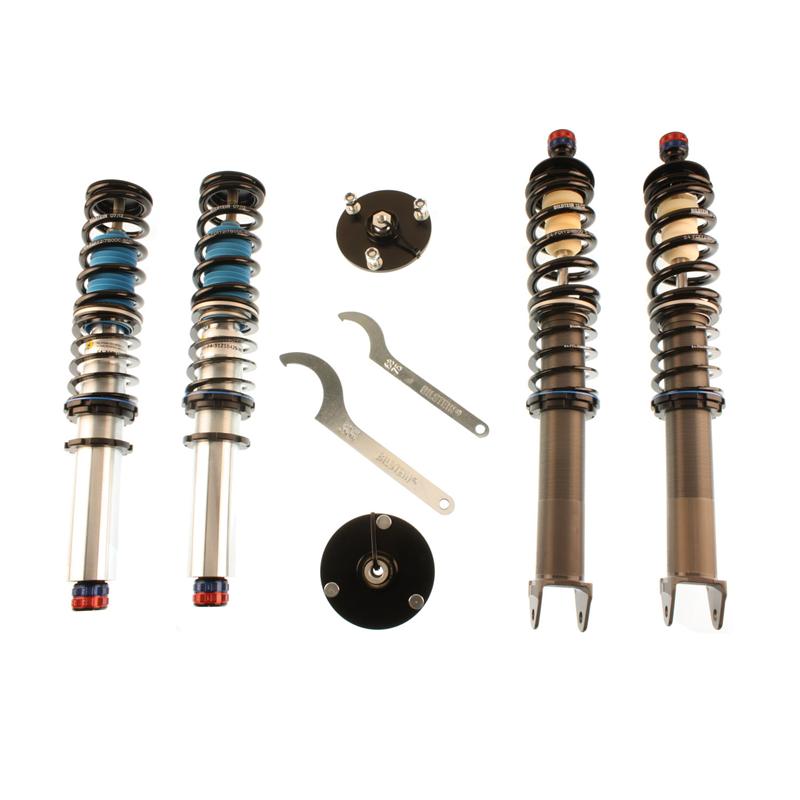
Suspension Links and Toe-Steer
The upper rear suspension links (2 per side, 4 per car) on all 997 models feature neoprene bushings and are non-adjustable in length. The RSS variant adjustable links provide a long lasting, quiet solution to both of these problems by giving adjustable length and monoball bushings on either end. These bushings stiffen up the handling and feedback on the car, giving quicker handling response and more direct results when you turn the car. The adjustable length helps to set the alignment to factory or race specs on modified cars.
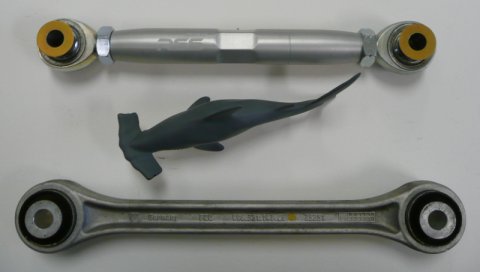
One other issue with the rear suspension is the toe-steer link, that directs the toe-in/out angle of the rear wheels under cornering. The RSS replacement Toe-Steer kit also includes a monoball inner bushing, giving further tightened handling and feedback as it replaces another neoprene bushing. The length is adjustable for toe adjustment on the alignment beyond factory and the locking plates ensure that the toe-angle does not swivel and change as the suspension arm travels up and down with bumps, unlike the factory piece.
Engine Mounts
The stock engine mounts are hydraulic engine mounts, and the drivetrain will move independent of the chassis during acceleration, deceleration and cornering. This movement can upset the balance of the vehicle and create negative handling effects. The RSS engine mounts minimize these effects by utilizing specialized polyurethane bushings which offer a firmer, more direct driving feel with optimum feedback. This upgrade will not adversely affect ride quality or cause knock sensor issues commonly associated with solid engine mounts.
Control Arms, Thrust Arm Bushings, Pivot Bushings
The GT3RS has an adjustable front and rear control arm due to its split design, meaning the negative camber on the front wheels can be adjusted using shims.
We recommend the RSS Tarmac Series Control Arms if you're looking to tighten up the handling on the RS - the RSS arms include steel monoball pivot bushings and aluminum thrust arm bushings. The factory arms have two locations (on either end of each arm) where Porsche opted to use a neoprene bushing, to quiet and dampen the street driving. The RSS arms hold up well with mileage (we have seen some with 30,000+ miles of mixed driving now) and are very quiet despite these metal bushings. An alternative is to replace the neoprene bushings in your stock control arms, but due to the labor involved and the permanent nature of this modification, we find it's better, easier and cheaper to simply swap them out.
The result is better feedback and more direct handling; a stiffer setup that won't cause headaches and back pain from extra jolts. Yes, these parts are okay for street use and it's unlikely you'll complain about the extra noise.
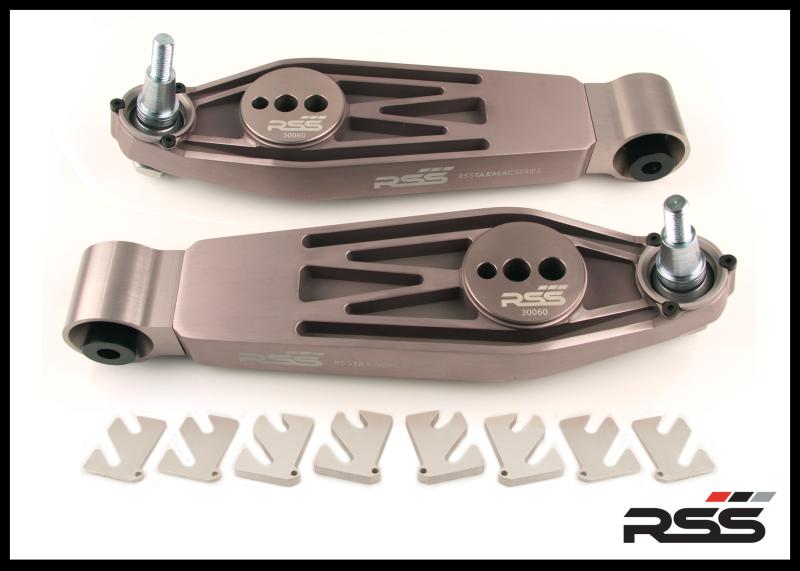
Sway Bars
The stock sway bars on the GT3RS have three adjustment points for low, medium or hard settings in the rear and five adjustment points in the front. We recommend keeping these stock, and modifying the settings based on your driving style, alignment setup and track conditions. A common mistake on the sway bar setting is to set it "full hard". This can result in excessive understeer (front), oversteer (rear) or a lack of traction at one corner. Typically a softer setting is recommended when dialing in the suspension.
Some track folks have faired well with a thicker factory GT2 rear bar.
Lift Systems and Daily Driving the Ultra Low GT3
For those of you that intend on driving the car every day, everywhere, the front lip and nose tends to take a beating. Getting in and out of driveways is hard enough on a normal 911, let alone a lowered GT3RS. For the Mk2, Porsche actually addressed this by offering an optional pneumatic airlift system from the factory but this can not be retrofitted to the Mk1. Even if you do decide to spend any extra money on a complex axle lift system, we recommend checking our "How to Enter Steep Driveways Without Damaging Front Lips" Article.
There is actually a solid solution that we used for 3.5 years on our own Kermit without any adverse effects or issues. In fact, the TechArt Noselift system is not only faster but it also raises the nose even higher than the factory Mk2 kit by an extra inch (a total of 2.5-inches). This makes it more convenient and faster to navigate out of gas stations, parking structures with "Black" Ski Slope-style driveways/entrances/exits. The high cost of the system does mean you need to factor in just how many lips you can buy for the price of entry though. Over the years this system has proved to be quite popular and we've installed them on GT2's, GTRS', Mk2 GT3RS' and many Turbos.
Flywheel/clutch
That GT3RS engine was designed to be revved and the factory outfitted the car with the single mass flywheel (the standard GT3 has a 28-pound dual mass flywheel) and until it wears out there's no reason to change it to the 4.0 spec. The latter is more expensive and certainly able to last longer with a beefier pressure plate. There have been many instances recorded from overly aggressive down-shifting in track-like conditions where the straps on the pressure plate have failed with the 3.6 or 3.8 pressure plates (which are riveted together). The 4.0 pressure plate has straps that are bolted together. We recommend the factory 4.0 RS kit and in fact Porsche dealers have superseded the 3.8 parts for these reasons. For a full race car some folks have switched to a Tilton multi-disk set up but this is neither practical nor friendly for a street car. The words "get a cup car" come to mind if you're racing.
LSD - Limited Slip Differential
The factory does provide an LSD on the 997 GT3RS, but it's a rather weak clutch pack and materials. More often than not, we find low mile GT3s that have been tracked a few times have lost any use of the factory limited slip differential (essentially running an open diff). It's certainly been documented as a weak point in the car and for those of you regularly going to the track this is an area we suggest beefing up. Most popular with us is the 60/40 split Guard upgrade kit. Don't go overly aggressive on a street car as you can start to get the car walking into other lanes when letting off the gas...
Shifters & Cables
The stock shifter mechanism in any GT3 is pretty-spot on but like anything else that uses cheaper plastic internals it can indeed wear out over time. If you do feel the need to go to an even more precise and optional shorter shifter set up the more adjustable Numeric Racing shift kit (we like to set that on the loosest hole) is our go to replacement. The stiffer hardware and mechanism of the Numeric as well as the ability to adjust the throw gives you a more precise and tigher feel overall although we do think the stock feel is just fine. If you like the feel and throw of the factory unit and feel like it's lacking in precision still that's because the plastic mechanism can still wear out some and cause it to feel vague so we also use a bushing rebuild kit. Porsche sadly uses cheap plastic bushings and pivot connections utilized in the shifter assembly which wear out over time. Because these bushings require loose tolerances and free play to not bind, they generate sloppy shifter feel. Moreover, their plastic and rubber construction flexes excessively which causes spongy gear engagement, especially on cars that have accumulated wear and tear over the years. The retrofit kit is comprised of custom machined aluminum pieces, heavy-duty enclosed ball bearings, and hardware to entirely upgrade the factory shifter assembly.Unless you're doing a lot of track work it's unlikely you would ever break the factory shifter cables but should you need replacements Numeric Racing also has that covered.
Aerodynamics
The GT3 and/or GT3RS body/aero are both absolutely functional and visually gorgeous. There should really be a "Do Not Tamper" sign before changing any aero bits on these cars. However, the front lips get munched a lot. The Motorsport CUP lips are also popular and more aggressive, although try to get the one with the cut outs for the brake cooling -- unlike on a cup car where cooling is handled differently.
We have also used the even more aggressive Cargraphic lip on several cars (including our own) but be warned when it hits the ground, as it did during our TV segment for Speed Channel on Turn 11 at Sears Point (the suspension compressed under braking)... all that was left of our $1400 were thousands of small shards of plastic after a rather exciting explosion.
A common complaint for daily driver GT3RS is that the front end/lip scrapes and one can't get out of the driveway easily. We've had customers who literally have contractors out to change their driveways in downtown San Francisco to narrow the slope or you can keep on buying lips. It's disposable if you will.
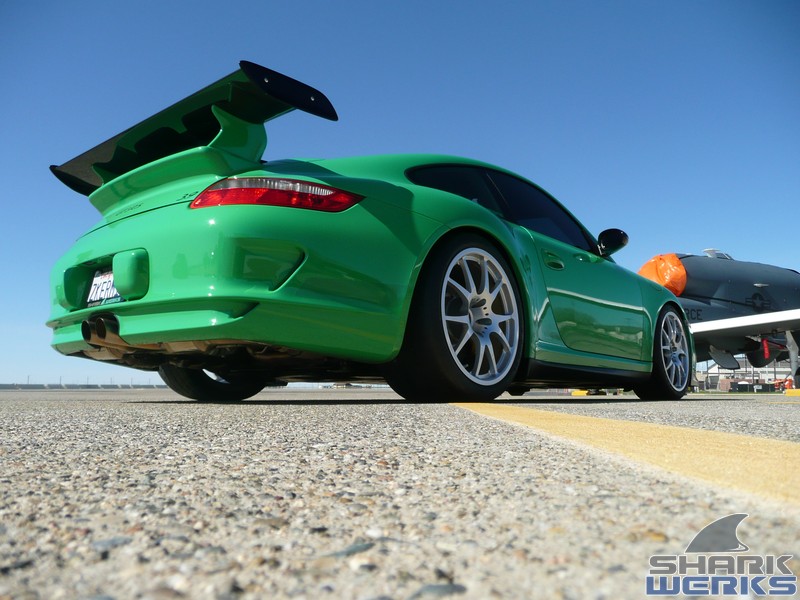
Some of you may have noticed that we did actually install the widebody side skirts from the 2008 997 GT2. For whatever reason Porsche went on to use the very same side skirts on the 997.2 GT3RS. We like how they look so there.
Protecting the Front Radiators
Finally, whilst not exactly an "aero" modification the front bumper, in particular the center, has a large gaping area that sports the center radiator. Whether you're a track guy or a street driver it's not uncommon for those unprotected radiators to get peppered with debris and other road hazards. In the worst case you can lose a track day as well as a lot of coolant and require a tow home.
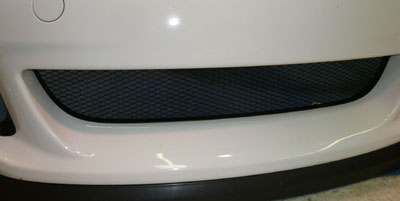
There are many screen kits out there on the market we just happen to use use the Cargraphic one in black which seems to be the best aesthetically and with zip-tie installation can be removed at any time. The bumper does need to be removed for installation but it saves your radiators and ends up looking pretty good. This is a perfect example of Porsche keeping one eye open and one eye closed on the aftermarket world as the Mk2 came with front grill screens from the factory.
RMS Oil Leaks, Coolant Failures and Other Concerns
The GT3RS is well known to be a very reliable car, especially considering its performance and how it's intended to be driven. However, it does have a few reliability concerns that will often be mentioned by owners and enthusiasts. The cooling system on the cars is completely sufficient for track use and the car can be raced from the factory without worrying about overheating, but it has a couple of flaws that need to be addressed. This is the case with all modern GT1 engine-based Porsches: 996 GT3, 997 GT3 and GT3RS, 997.2 GT3 and GT3RS, 996 Turbo and 997 Turbo, all GT2 models.
Rear Main Seal Oil Leaks and Smoking on Cold Startup
The GT3/GT3RS, by design, has a rear engine seal that will leak oil. This will leak especially after the car has been sitting for several days or longer. It is very common and considered normal by Porsche North America. The amount of oil that leaks varies, but it is typically a few drops per day, after a couple days of sitting. This is due to the way the seal works under vacuum, and while the engine is running it should not leak oil. Once the vacuum is released and the car is shut down, it will eventually begin to leak.
There are a couple ideas on how to fix this, including other engine seals (from the 996 Turbo for example), however nothing has been 100% proven effective to work. The best solution seems to be to drive the car regularly and accept the fact that it will leak when you do not drive it. You can try replacing the seal if the leaking becomes excessive.
On cold starts, especially after the car has been sitting for some time, the car will emit excessive clouds of smoke from the tailpipe. This is considered normal and is due to the way the oil recirculates in the engine. A pool of oil will form in the engine when it is not running. This oil burns and smokes upon startup after the car has been sitting. There is no fix for this and it will not harm your vehicle.
Coolant Pipe Leaks / Catastrophic Coolant Pipe Failures
One major concern, especially if the car is being tracked or driven at high speeds, relates to the six coolant pipes running from the heat exchanger, water pump and coolant manifolds. These pipes are sealed into their homes using a rather weak adhesive, which tends to fail at unpredictable intervals. The result is a rapid spilling of nearly five gallons of slippery coolant directly over your rear tires! Many owners have reported high-speed crash and spinning incidents due to this problem, least of your worries would be that you could overheat and damage the $25,000+ engine in your car.
There are a couple of methods for repairing these coolant leaks, typically either pinning or welding the tubes in place and re-sealing to ensure a permanent fix. The real problem is that the hoses are ejecting from the engine, not that they are leaking. The pin technique is our method, and we have used it on every vehicle that has come in for an engine rebuild with no failures to date. Welding may be an option, however the housings being welded to are porous cast aluminum and the tubes are ultra thin - an awful combination that as we have witnessed may result in porosity / micro leaks and even "clean" looking welds may be ineffective at preventing leaks, even if they fix the ejecting tube issue. More information on this process is available here:
We recommend removing the engine from the vehicle to perform this task.
There is one other cooling concern on these cars: two small plastic tubes on the engine that tend to crack due to ultra thin walls. This happens especially often on higher-mileage or tracked cars. These plastic coolant elbow pipes run to the oil cooler (aka heat exchanger). The stock molded plastic tube will break down at the o-ring slot (its weakest and thinnest point) over time and mileage, causing a crack to appear spilling coolant. Eventually the whole engine will need to be removed in order to replace a cheap plastic tube which could cost thousands of dollars. This issue has also been observed on the 997 Turbo model.
A razor blade is used to show where the leak occurs:
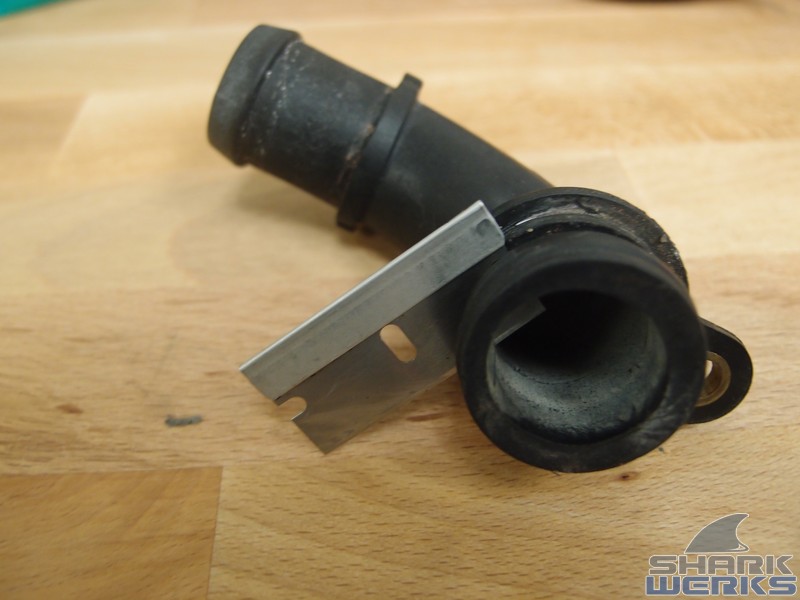
For this reason we created a stainless steel pipe with machined billet ends to permanently replace the cheap plastic part. The engine must be removed in order to install these so we recommend performing the "coolant fix" at the same time or replacing these whenever an engine rebuild is in progress. When doing so we put together a useful factory hose/hardware replacement kit. We also provide a full write up on this process.
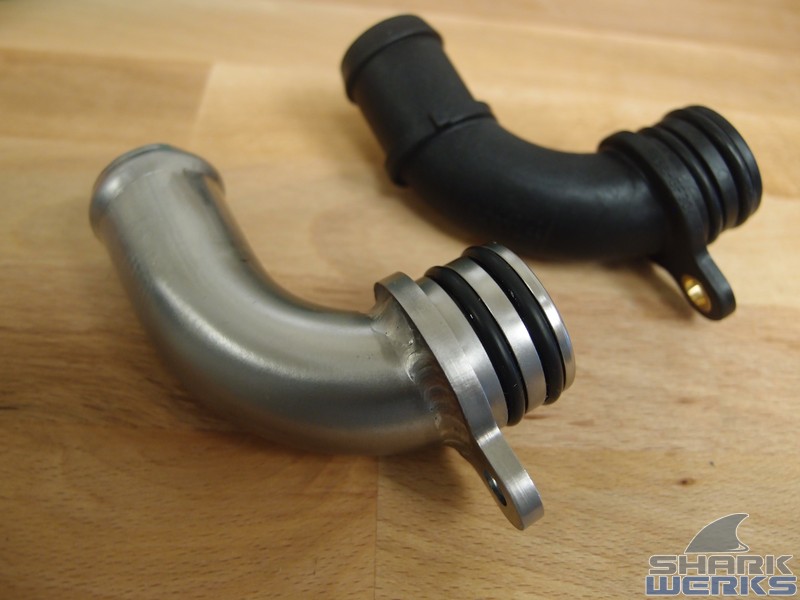
Seats, safety and track prep
In Europe the skinny Carrera GT fixed-back buckets were outfitted in the RS, but not in the USA. Those of us that are extremely skinny and don't mind paying the extra $10-15k did outfit a GT3 or RS with these Recaro made buckets. They're super light (see below) but not exactly for regular sized folks.

The 996 GT3 Euro seat makes for a worthy and cheaper factory alternative:
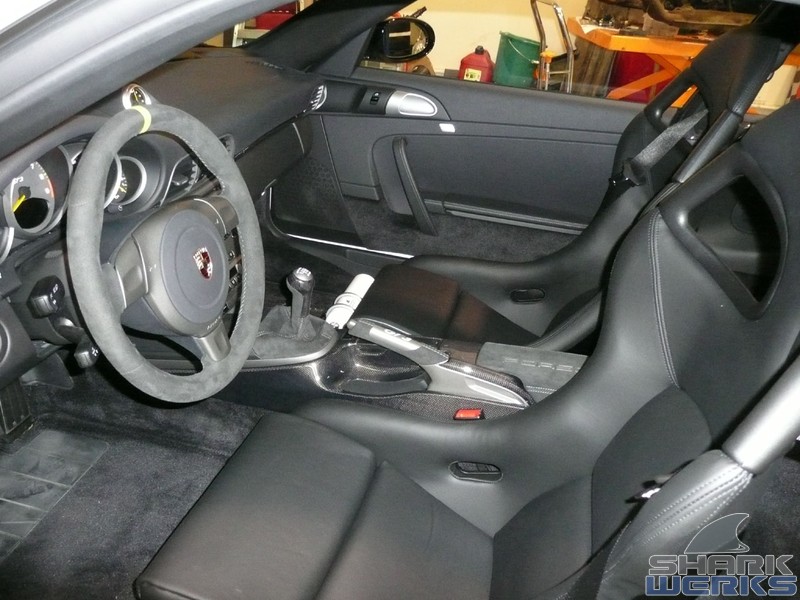
Mk2 carbon foldable bucket seats (found also in the 2008 GT2) are another option (though expensive) and fit in just fine. They do seem to sit higher than you would expect for a taller person. A helmet could be tight...
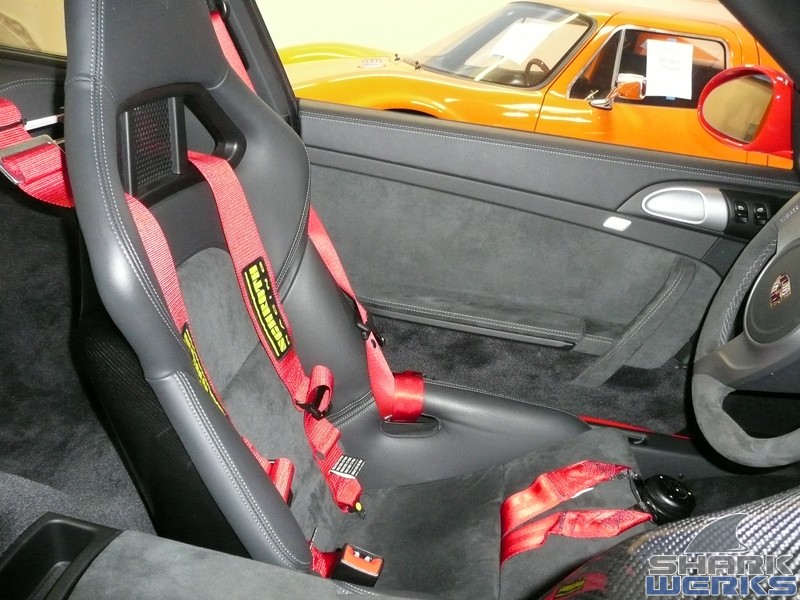
For more serious track work, look into Recaro/Sparco alternatives. Be sure to get the correct bracket/hardware and leave enough clearance for your head and helmet- especially in the GT3 with its sunroof robbing you of an inch or two.
RS' in Europe or Clubsport GT3s came with various versions of the factory rollbar. Not so in the US. There are a few good ways to address this and should you need/want to install 6point harnesses, we recommend Schroth Profil II pull-down with HANS capability. Also remember to plan on a good solution for the sub belt - we suggest either using the factory 996 GT3 sub belt bracket, or a Brey Krause alternative and/or eye-bolts in the chassis. It is possible to import the factory Tequipment roll bar (for GT3s) or RS half-cages can be imported from Europe. Some of the early production RS' actually still have the mounting plates under the floor carpet but most do not. For those that don't we suggest welding in your own plates and receivers.

In the US it's much easier to go with after-market bolt-in roll bars such as the ones we use from RSS. A starter or analogue of the factory Tequipment bar is the 901 shown below:
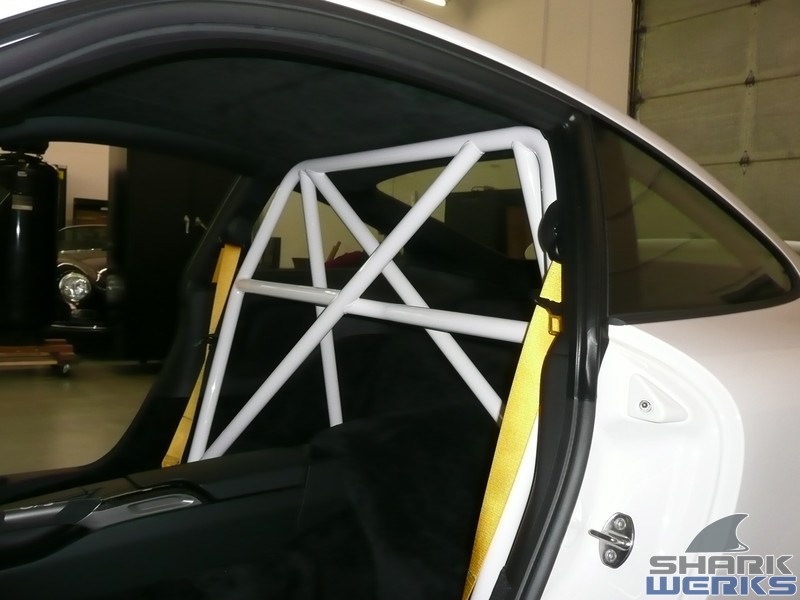
For the GT3RS the most popular is the 930 which bolts into the strut tops at the rear of the car (an improvement over the Tequipment). There is also a more serious Chromoly made weld-in option in the form of the extra-braced 931.
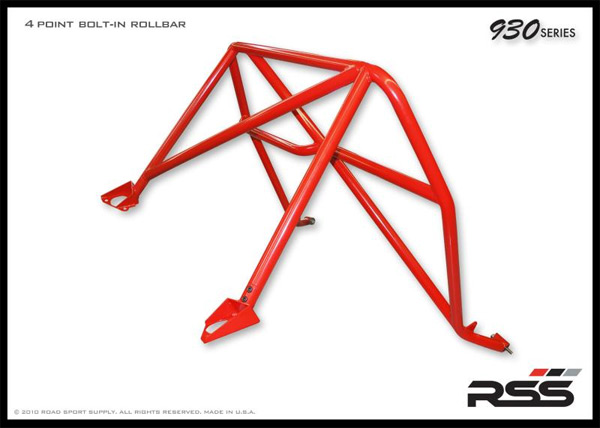
It's important to remember that none of these solutions are welded in nor do they provide the same level of safety as a professionally built and structurally improved full roll cage. If you intend on more serious track events or club racing, then we suggest finding an experienced cage builder. In our area we use TC Design for example.
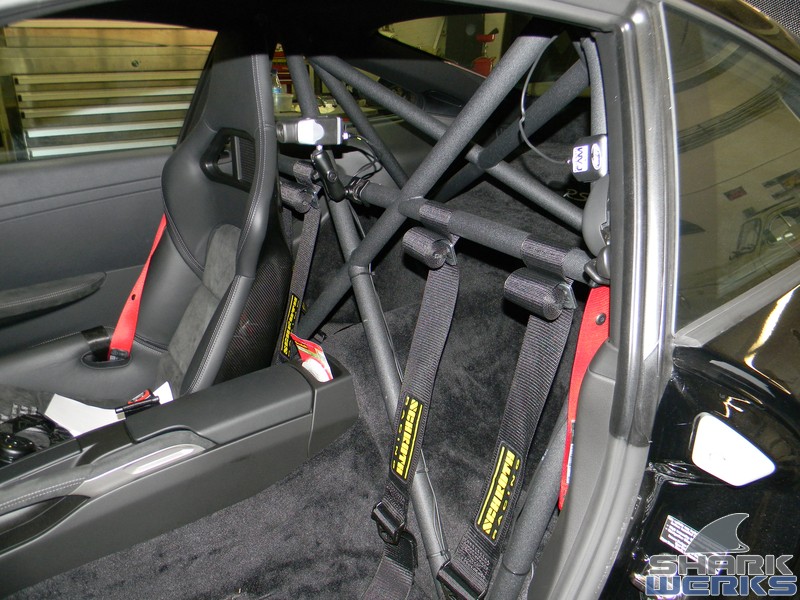
These are usually welded to the chassis and do not have the points bolted into seat belt mounts etc... that could sheer. More serious track nuts tend to refer to these "bolt-in" roll bars as "jewelry" or "glorified harness bars". For driver's education they do the job just fine though.
For those of you that do not want to have a roll-bar you can actually use a Brey Krause harness bar which is easily removable and less intrusive.
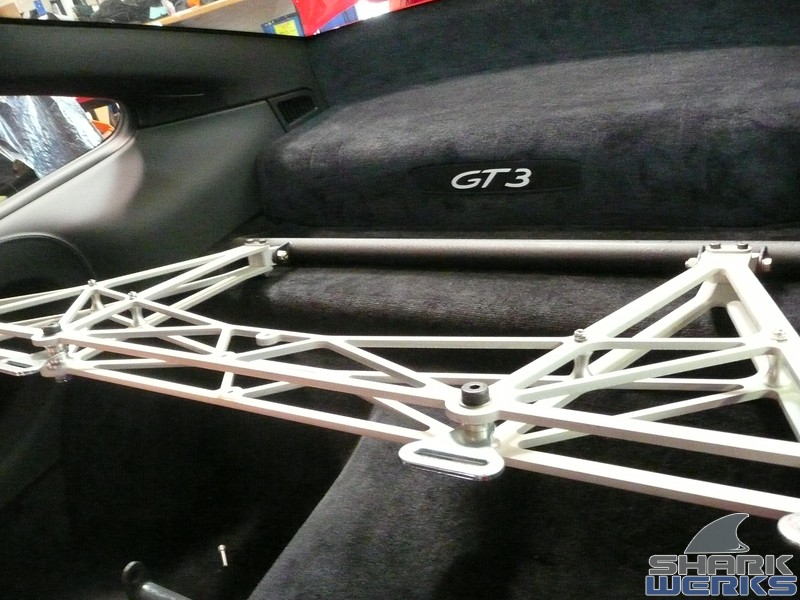
SharkWerks Recommends (for Street Use)
- GT3 bypass exhaust
- EVOMSit Software
- Cargraphic Front Screens
- Toe-steer kit & locking plates
- Adjustable rear links
- Lightweight Flywheel
- Coolant Pipe "Fix"
- Shark Werks Coolant Pipes
SharkWerks Recommends (for Track Use)
- GT3 bypass exhaust or SharkWerks GT3 race pipe for tracks with no sound limits
- EVOMSit Software
- Cargraphic Front Screens
- Toe-steer kit & locking plates
- Adjustable rear links
- Lightweight Flywheel
- Steel brakes (if tracking regularly and using PCCB brakes)
- Harness bar & safety harnesses
- LSD
- RSS engine mounts
- Coolant Pipe "Fix"
- Shark Werks Coolant Pipes
- Zinc-based racing oil such as Mobil 1 Synthetic Racing Oil
Items we would NOT recommend changing
- Intake
- Headers / Catalytic converters
- Transmission
- Rear wing or body panels (except 997 GT2 side skirts as an option)
- OEM Radiator and cooling system (except coolant pipes that fail)
- OEM Oil cooler and oil system
Recommended Forums & Links
Rennlist.com - The most active forum for GT3RS owners, a wealth of information and especially for track use
6SpeedOnline.com - A great site for street enthusiasts and beginners to the GT3RS
